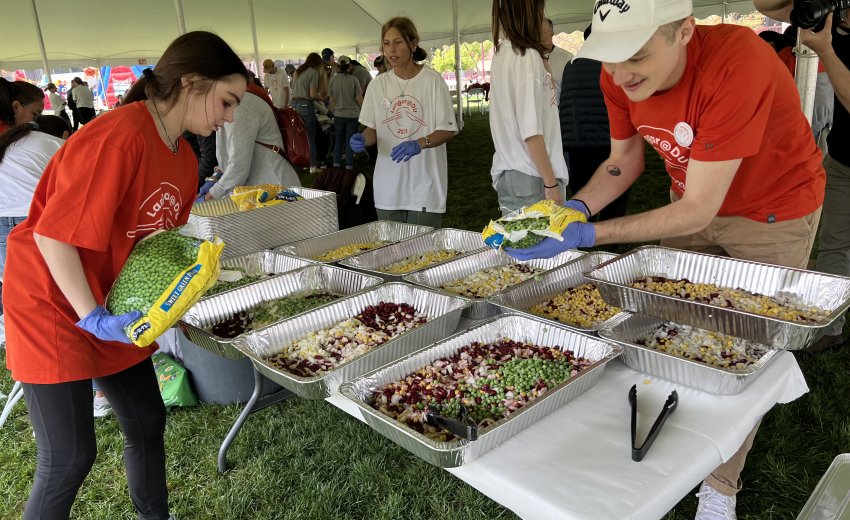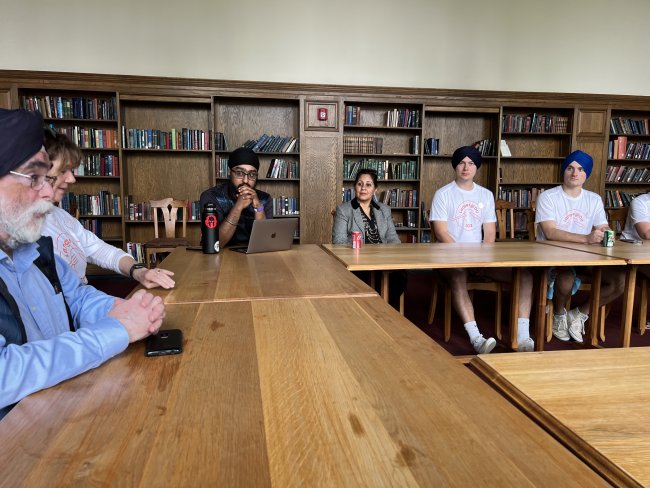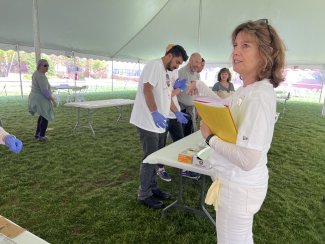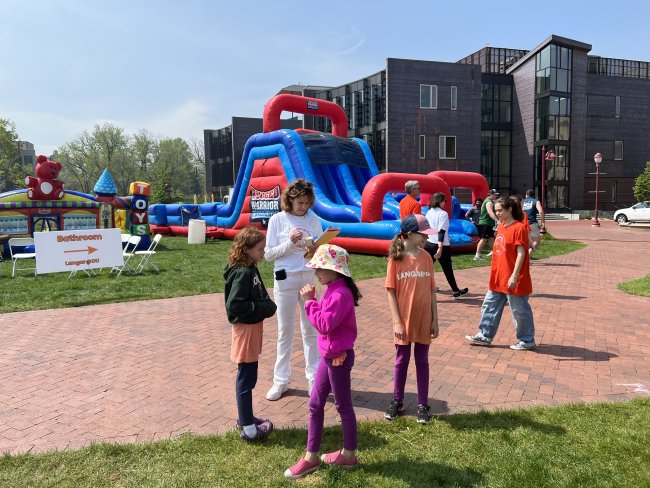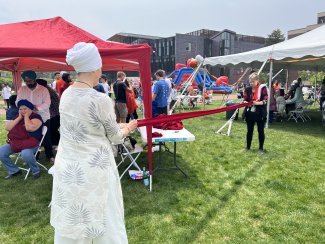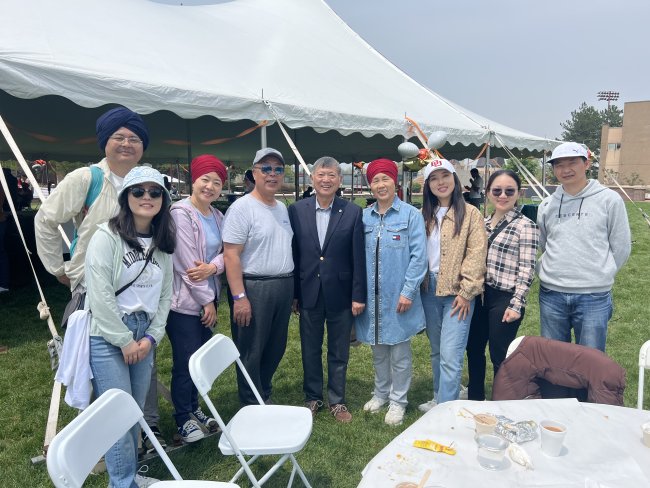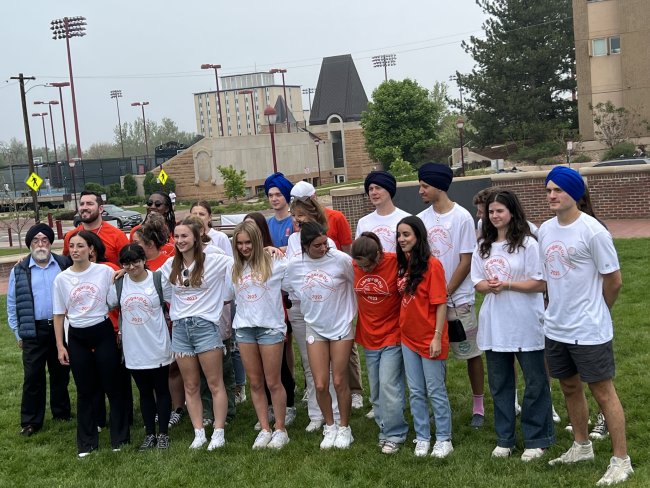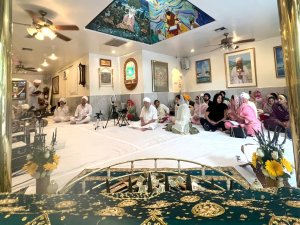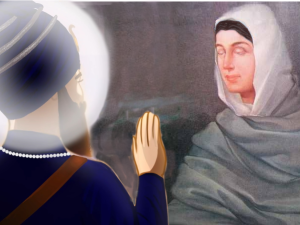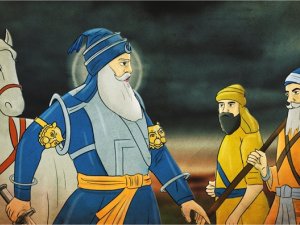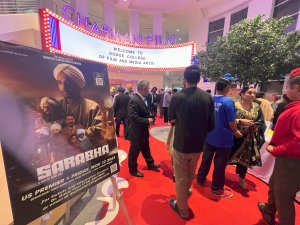Pictured above: DU students preparing food while wearing their langar t-shirts.
Dilpreet Singh Jammu is a Sikh leader in Denver Colorado. I didn't quite know what to expect when he invited a representative from SikhNet to a langar event in Denver Colorado. Also invited was Gurpreet Kaur and Salman from SikhLens, Reshma Kaur president of Kaur Foundation, Tejpal Singh from the American Sikh History Project and Bir Bahadur Singh. It was a pleasure meet and get to know all of these individuals.
As it turns out the langar event we are attending it not put on by Dilpreet or any other Sikh leader. It's being put on by a wonderful woman who has taken it upon herself to spread the practice of langar because of her inspiration from the Sikh community.
Meet Marjie
Marjie was a professional product developer who attended a new age faith group called the Mile High Church. After Dilpreet Singh Jammu hosted a talk at the church and explained about Sikhi the church was transformed into a gurdwara. Guru Sahib was brought in and after langar was served. The event affected Marjie who went on to be a main sevadar with 'langar at the park' another inter-community initiative that happened every week in downtown Denver.
These langars were happening during 2016 when communal stress was very high and social divisiveness was solidifying. At a time when families and friends were breaking apart, she saw the healing that langar brought to her city.
Langar The College Curricula
Incidentally she took a career change and went back to school to get her PhD. She pitched for her doctorate she would teach a class on.... langar. Denver University accepted her proposal and with the guidance of Dilpreet Singh she now hosts an elective class in communications. While langar is a sacred practice for the Sikh world (according to wikipedia the word langar comes from the Sufi community) it is interesting that her class is not in interfaith studies. Instead it is in applied communications. This itself is significant, that langar is not a concept, it is a practice. The students are invoked to simply start organizing the langar event as a means to bring people together who otherwise might not be together. If they learn more about Sikhi, they mostly do it on their own initiative outside of class.
The Students Run The Program
One of the first things that the class calls on the students to do is to decide what their function in the event is. There is a social media team, food coordination team and a seva team (which looks after what now?). Again, the implicit teaching is that langar is something that doesn't need language or history classes, it just requires the intention of unity and action to carry it out.
Communal Unity
Participating in Marjie's student's langar event was a delight. They shared stories of how langar had brought different departments within the school together and that they could see the real life effect of professors interact with students and others who would otherwise never cross paths. One professor from the previous year showed up to warm tortillas and could not be separated from the stove the whole day. Some caterers were required and the students invited them and their bosses to participate in the langar as well. Needless to say caterers are not asked to join in the meals they provide and they were touched. The concept of bringing fellow human beings together, to see our shared humanity, this core ethic in Sikhi, was being successfully applied.... by all non-Sikhs. It was really something to witness.
Marjie has no plan to stop teaching this class so a langar event will be put on by DU students indefinitely.

